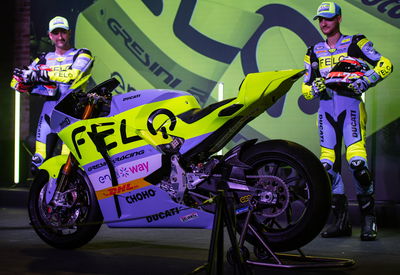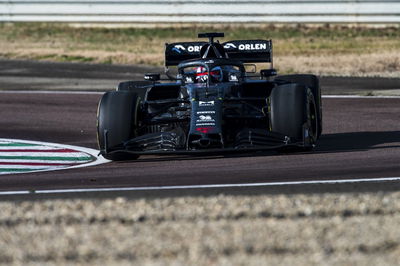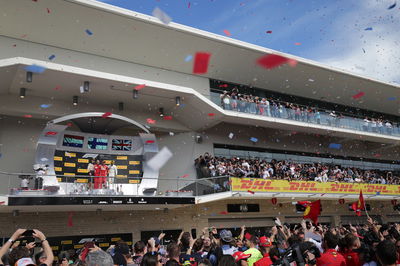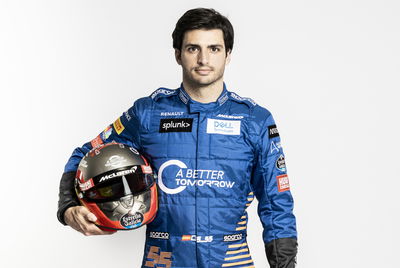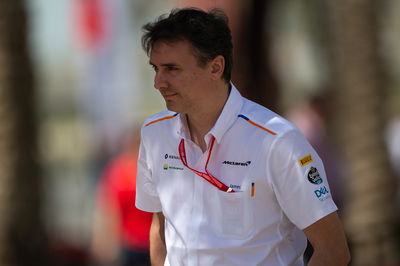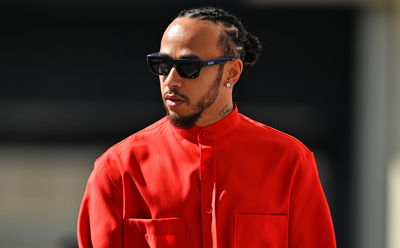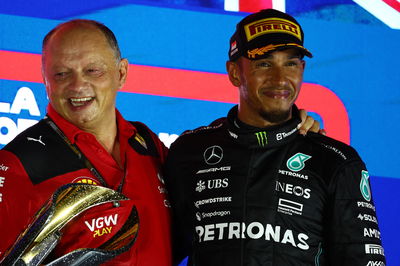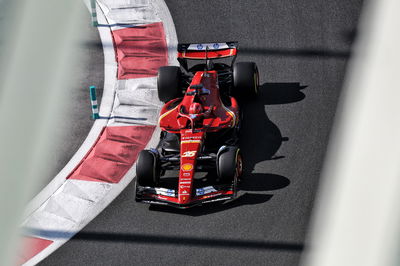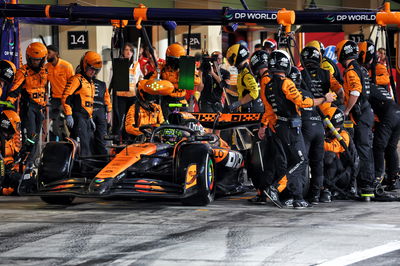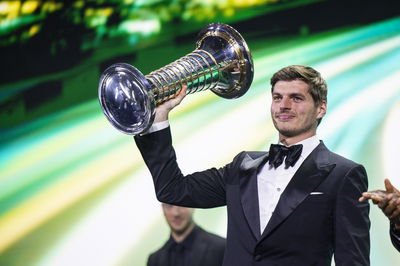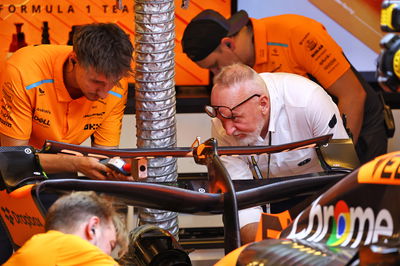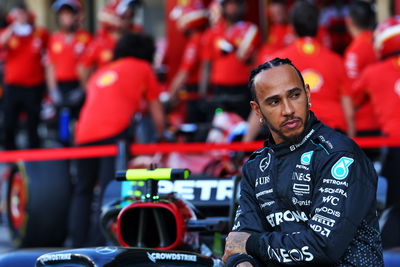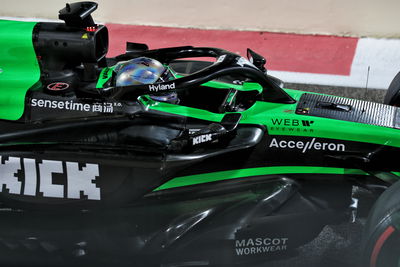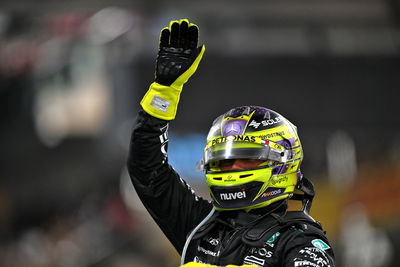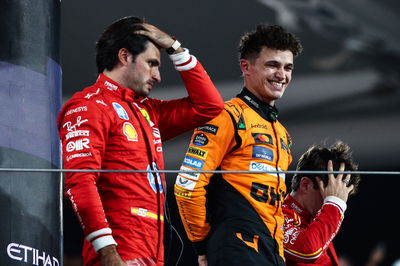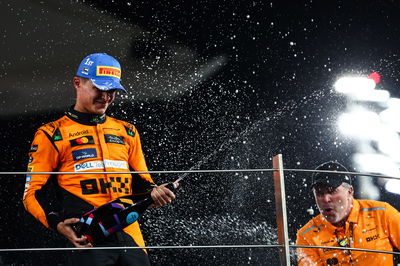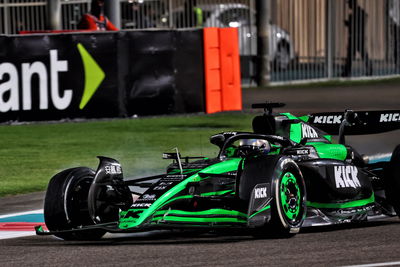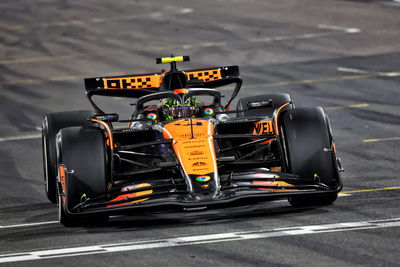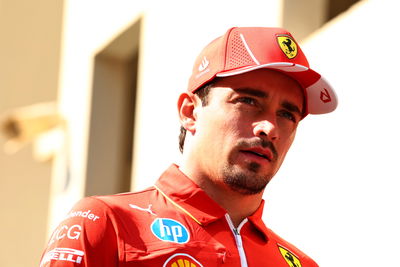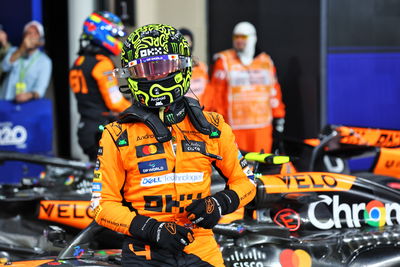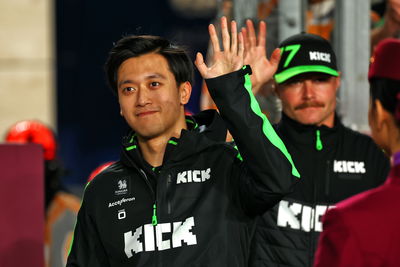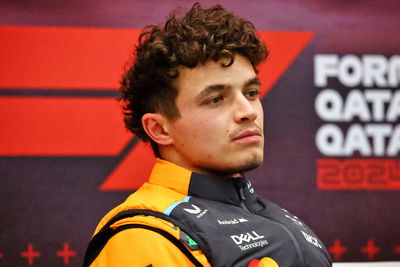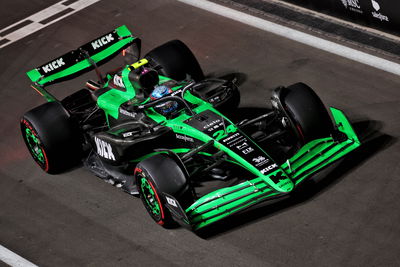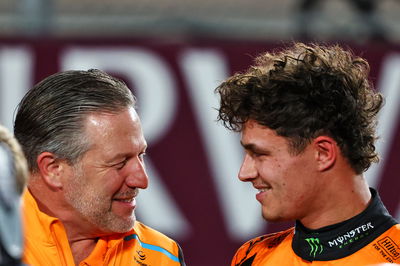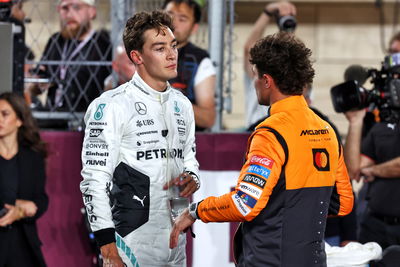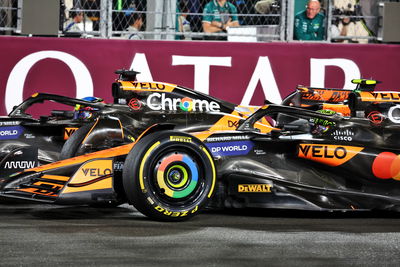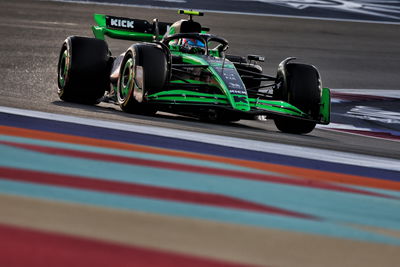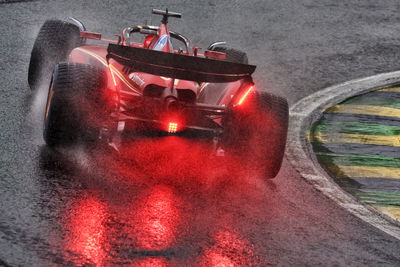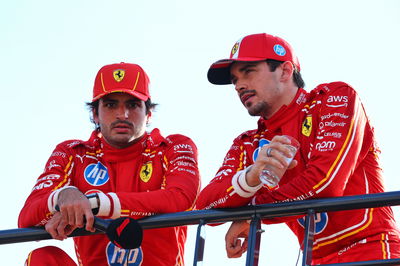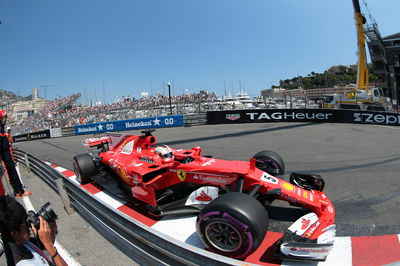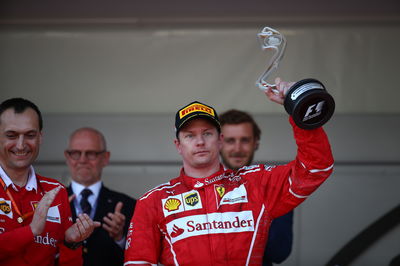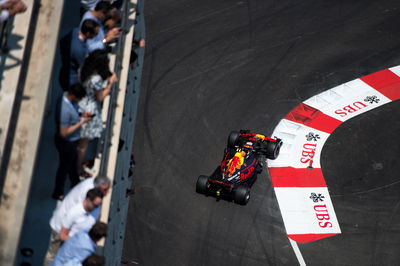Kimi Räikkönen
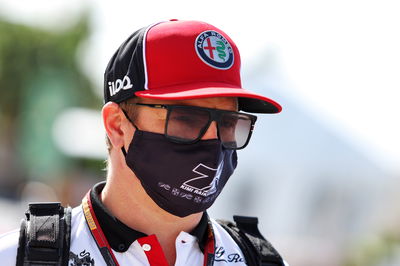
Personal Information

About Kimi Räikkönen
Following hard on the heels of the 2000 season's rookie sensation Jenson Button, Kimi Raikkonen entered the 2001 campaign with even fewer car races under his belt than the talented English youngster.
Career Stats
Full Biography
Following hard on the heels of the 2000 season's rookie sensation Jenson Button, Kimi Raikkonen entered the 2001 campaign with even fewer car races under his belt than the talented English youngster.
A graduate of the World and European karting scene, Raikkonen had just 23 events in single-seaters under his belt by the time Sauber cemented his signature on an F1 contract, causing some concern among the establishment and governing body alike over his alleged inexperience. Like Button, however, the Finn points to an extensive kart career as providing the basis for his rapid escalation to the top flight.
Beginning his motorsport odyssey at the tender age of eleven in 1991, the Espoo resident initially contested national events in his native Finland, before moving onwards and upwards to the tightly-fought international scene. Although titles may not have come his way, Raikkonen proved that he had the calibre to run at the front, and took race wins at several championship rounds before making the move into cars. First in the 1997 and 1998 Finnish and Nordic series in Formula ICA and A championships respectively, Raikkonen had already won his maiden international FA race two years previously.
Eschewing the more traditional Formula Ford route into single-seaters, Raikkonen plumped for the slicks-and-wings category run by Renault for his debut - and made the move to the junior formulae hotbed of Britain for his education. Joining FFord team Haywood Racing - which had powered Button to the 1998 British FFord title - the Finn took a podium finish on his maiden outing, but was later forced to quit the series after technical problems thwarted a championship challenge.
Preferring to save his small financial budget for a concerted assault on another title, Raikkonen teamed up with the crack Manor Motorsport squad for the FRenault UK Winter Series, having proven his ability on sporadic outings in both the FFord Zetec EuroCup and Festival events at the end of 1999. The decision to move to Manor paid off handsomely, as a 100 per cent record secured the Winter Series title, and set the Finn up for an equally successful season in the main series the following year.
It was Raikkonen's prowess in landing the 2000 season British FRenault Sport title that first attracted the attention of the Formula One teams, as he took seven wins, ten podiums, seven pole positions and six fastest laps from the ten races. Further impressive performances in the category's EuroCup - where he took two wins, two poles and two fastest laps from three events (and retired from the lead of the other) - finally persuaded Peter Sauber to offer Raikkonen a maiden F1 test, as much to prevent other teams getting their hands on him first!
With just those 23 races under his belt, there were naturally serious concerns that Raikkonen may be biting off more than he could chew in jumping straight from FRenault to F1, but the confident Kimi quickly dispelled any doubts by completing in excess of 100 testing kilometres at Mugello in Italy. Further impressive outings at Jerez and Barcelona in December - where he bettered the lap times of many more established rivals - only served to confirm his potential, and Sauber moved quickly to secure his name on a contract.
He set about proving his point in 2001 and, along with equally young team-mate Nick Heidfeld, rattled the cage of the opposition with a string of points finishes, including sixth place on debut in Melbourne. High points of fourth in both Austria and Canada helped elevate the Finn to a championship ranking of tenth - and attracted the attention of others.
Before the end of the season, Raikkonen was a McLaren man - the Woking team having acted quickly to replace the retiring Mika Hakkinen and stolen his younger countryman from under the noses of Ferrari. The move also left Heidfeld's nose somewhat out of joint, but the German had the last laugh as Raikkonen's end-of-season form dipped after the announcement was made, and he ended his year with a big shunt at the Japanese GP.
Undaunted by either that, or the pressure he faced at McLaren, Raikkonen performed well in 2002. Partnered by veteran David Coulthard, the Finn soon showed he had the upper hand in qualifying, beating DC 10 times, to the Scot's 7 by the season end.
He also went well in the races although reliability problems from Brazil did see him notch up six successive retirements. Mostly though these were due to circumstances outside his control and the Finn eventually ended the season with 24 points.
All in all he would finish on the podium four times, three times in third and once in second, the latter in France was almost certainly nearly the scene of his maiden win. He was robbed though when Allan McNish’s Toyota engine dumped its oil on the track. Kimi went off line and Michael Schumacher grabbed the lead, leaving the Finn to come home second best. If this was the biggest disappointment though, he used it to his advantage in 2003.
Kimi had a storming year, taking his maiden F1 win in Malaysia, and taking the battle for the title with Michael Schumacher right down to the wire - the Finn losing out in the end by just two points.
To say he was aided by the new points system, which meant the gap between first and second was worth only two points now and not four, cannot be denied, but neither too can his form. Yes, there was 'lows' - most noticeably in the new single lap qualifying, when in Spain and Canada he was forced to start right from the back after going off on his 'flyer'. This though is not to do the 'Ice-man' any injustice, because despite these few errors, he consistently outperformed his team-mate, Coulthard, and by the season end to say he was considered the number one, went without saying.
Ten podium finishes - and another three points finishes (i.e. only three retirements), were a mark of his consistency, and with a little more luck, he might so easily have been the champion - all this too and in the MP17-D [a development of the 2002 car], after the MP4-18 flopped and was never raced.
Kimi's third season with McLaren was bitterly disappointing, especially considering his form in 2003. It wasn't his fault though. The MP4-19 was never up to the job, and in the early part of the season, both he and team-mate, Coulthard, struggled to achieve any creditable results - Kimi managing just 10 points prior to the introduction of the MP4-19B at the French GP.
The MP4-19B though saved his [and McLaren's] year, and following a second place finish at the British GP, Kimi went on to win in Belgium - and in style, beating Michael Schumacher fair and square. By the end of the year, a third in China, a sixth in Japan and a second in Brazil, raised his points tally to 45, the 'Iceman' ending up classified seventh in the drivers' championship.
After a season which was nothing short of a disaster, Raikkonen was keen to return to winning ways in 2005 - and that was exactly what the Finn did. Putting stories about his private life during the off season to one side, Raikkonen started the season in inauspicious style, picking up a single point from the opening two races before a first podium arrived in Bahrain.
Retirement in San Marino - where he was clearly the quickest driver - left Raikkonen with just seven points from the opening four races (compared to 36 for Alonso) but it was in Spain where the McLaren man finally started to make an impression on the points table, taking pole position and the race win. He repeated the feat in Monaco and was only prevented from making it a hat-trick of victories when a tyre failed on the final lap at the Nurburgring. Unfortunately for Raikkonen, it wasn't to be the last time that luck wouldn't be on his side...
As team-mate Montoya hit the headlines for the wrong reasons in Canada, Raikkonen took win number three of the season but - after the US GP fiasco - came two races that summed up Raikkonen's year. France and Britain saw the McLaren suffer problems in qualifying that left the Finn with a ten place grid penalty that would prove crucial as it left Raikkonen to battle through the midfield while his title rival was clear at the front. That he was able to secure a strong podium in both - and be less than 15 seconds from victory - was an clear sign of how strong the Raikkonen/McLaren package was.
Germany would be the only race in the second half of the season in which he would fail to finish inside the top four, with wins in Hungary, Turkey, Belgium and Japan - where he came from the rear of the field to only take the lead at the start of the final lap - but the gap to Alonso was simply too big and Raikkonen had to settle for the runner-up slot for the second time in his career.
With seven victories over the course of the season, Raikkonen headed into 2006 as one of the favourites for the title, however, his hopes for the year did not come to fruition.
Indeed McLaren were never able to match Renault or Ferrari and were unable to win a single grand prix. Kimi did his best, but six podiums - two second place finishes in Italy and Australia and four thirds - was as good as it got. The Finn eventually finished the season fifth in the rankings, with 65 points to his name, having finished in the points on twelve occasions in total, as well as taking three pole positions towards the end of the year.
Rumours of a move to Ferrari were finally confirmed in the September at the Italian Grand Prix, when Michael Schumacher announced his retirement.
With such large shoes to fill, Raikkonen had it all to do when he began with Ferrari in testing, but while McLaren arguably had the edge heading into the season, the Finn was in no mood to give up a factor that would certainly pay dividends at the end of the year.
Winning in dominant fashion on his debut at Albert Park, Raikkonen immediately looked to be the spiritual successor to Schumacher, but what followed was a series of relatively lacklustre performances that saw him somewhat out-paced if not out-raced by Felipe Massa.
Sparking some noises about dissatisfaction in the team, Raikkonen hit back as the second half of the European season began, racing to victory in France and Great Britain. However, when he retired in Germany, his title hopes appeared to be hanging by a thread.
Not that anyone seemed to tell the Finn, however, who went on to embark on a stunning end to the season that resulted in podiums in each of the final seven races.
Even so, with just two races remaining, Raikkonen still looked to be out of the title fight after a tyre mix-up in Japan left him unable to challenge for the lead. Lying 17 points behind Lewis Hamilton with a maximum of 20 available, Raikkonen's odds were certainly long.
They shortened when Hamilton crashed out in China, giving Raikkonen a slim chance of the title heading to Brazil, and slim was all he needed, as Hamilton saw his title hopes dissolve in a box of neutrals that left him down in seventh place. With Raikkonen inheriting the lead from team-mate Massa, it meant remarkably that he would be crowned the 2007 champion by a solitary point, despite only leading at the very start and the very end of the season.
Having reached his goal of becoming world champion, however, Raikkonen found the successful defence of his title a tough task, but not necessarily through any fault of Ferrari’s. While his 2008 campaign began strongly enough, with two wins from the opening four races, his mind and motivation appeared to wander through the remainder of the season.
Having punted Adrian Sutil into retirement at Monaco, and been punted out of Montreal by Hamilton in the pit-lane, a mix of mechanical woe and lacklustre driving condemned to end his chances of a second crown and led to suggestions that he may call time on his career. Out of contention following a crash in Singapore, Raikkonen dutifully supported team-mate Massa’s title bid, and did enough with three season-ending podiums to beat Robert Kubica on countback for third overall, but it was still a surprise when he agreed terms with the Scuderia to take his contract through to the end of 2010.
Ferrari’s 2008 title push also had the knock-on effect of distracting the team from the new-look rulebook for 2009, and the F60 proved to be off the pace in pre-season testing. Things didn't get much better when the racing started, with Raikkonen taking four races to get off the mark, and team-mate Massa one race longer. Third place in Monaco hinted at a revival, but there would be no title challenge, despite four successive podiums - including another Spa victory - between Hungary and Monza.
With Fernando Alonso still being linked to a Ferrari ride for 2010, it was unclear which driver would make way, especially with Massa having succumbed to injury in Hungary, but eventually it became clear that Raikkonen, despite having a year left on his contract, would not be retained. Despite being heavily linked to a return to McLaren - with Ferrari paying a chunk of his salary - the Finn had another escape route planned and, having already tasted the WRC on home soil in 2009, made the switch to rallying full-time - with world champions Citroen no less - for 2010. He finished tenth overall, with a best finish of fifth on the Rally of Turkey.
Raikkonen continued to be linked with, and refused to rule out, a return to F1 in the future but remained in the WRC for 2011, running a privateer Citroen under the Ice1 Racing banner. Again, results were not in keeping with expectation, and he finished tenth overall. Raikkonen also turned his hand to NASCAR, indulging in a couple of outings in the Craftsman Truck Series, but was not convinced to make the switch to the USA on a permanent basis.
Instead, F1 came calling again, with Raikkonen looking for some time as though he was poised to join the struggling Williams team. Within days of those talks having broken down, however, he was unveiled as the first confirmed driver at the renamed Lotus F1 team - somewhat surprisingly given his public falling out with team boss Eric Boullier a year previously.
The Finn formed part of an all-new line-up at Enstone, with GP2 champion Romain Grosjean returning to F1 as his team-mate as Lotus looked to bounce back from a disappointing 2011 campaign. Raikkonen’s return was the talking point of the pre-season, but he still needed Lotus to bounce back from its poor second half showing in 2012 if he was to recapture former glories. While the E20 was only randomly a match for McLaren and Red Bull, Raikkonen somehow kept himself in championship contention until Abu Dhabi where, ironically, he finally claimed the team’s only victory of the season. Prior to that, the Finn had racked up six podiums and looked set to become the only driver to complete every lap of the 20 races until an Interlagos detour ended in a locked gate.
As deadpan as ever, Raikkonen also kept audiences amused with his radio messages and press conference appearances, saying “leave me alone, I know what I’m doing” when leading at the Yas Marina Circuit.
2013 started in promising fashion as Raikkonen won in Australia and finished second in China, but there were more issues compared to the previous year and he couldn’t quite match the consistency. Having been linked to the Red Bull seat when Mark Webber announced his plan to retire at the end of the year, Raikkonen was overlooked in favour of Daniel Ricciardo. However, he soon confirmed a return to Ferrari as Felipe Massa’s replacement in 2014.
The exciting new driver pairing of Raikkonen and Fernando Alonso should make for fascinating viewing provided Raikkonen remains motivated; towards the end of 2013 he made it clear he hadn’t been paid during the build-up to the Abu Dhabi Grand Prix. He then crashed out on lap one and never raced again that year due to back surgery.
Re-joining Ferrari, where he won the World Championship in 2007, was hoped to rejuvenate the Finn after a disappointing end to 2013. However, like his teammate Alonso, the Finn struggled with the Ferrari and never threatened the front.
His best finish came in Belgium with a fourth place but Raikkonen spent the season battling in the midfield and ended the year an underwhelming 12th in the championship.
The Finn was unable to replicate the form showed by new Ferrari teammate Sebastian Vettel - who claimed three wins in 2015 - and picked up just three podiums, with a best result of second place in Bahrain. Despite arguably having less competitive machinery, Raikkonen managed one extra podium appearance the following year in 2016, but slipped to sixth place in the standings, his lowest finish since 2014.
Boosted by a car capable of challenging for the title, Raikkonen scored a memorable first pole since the 2008 French Grand Prix at Monaco, but lost the lead of the race during the pitstop phase. The 2007 graced the podium on seven occasions, but failed to match Vettel's levels of consistency and perforance as he ended the year fourth. Despite being labelled a "laggard" by Ferrari CEO Sergio Marchionne, Raikkonen was rewarded with a one-year contract extension to continue with the Scuderia until the end of the 2018 campaign.
While 2018 would prove to be Raikkonen's final season with Ferrari, it brought a sudden spurt of form. The Finn scored 12 podium finishes through the year, most notably ending his five-year win drought by defeating Lewis Hamilton and Max Verstappen at the United States Grand Prix in Austin. Raikkonen ended the year third in the drivers' championship, by far his best finish since re-joining Ferrari, but was nevertheless replaced by up-and-comer Charles Leclerc for 2019. Unwilling to call time on his F1 career, Raikkonen signed a deal to join Alfa Romeo Sauber, taking him full circle to the team with which his F1 career had begun 18 years earlier.
Raikkonen started strongly with Alfa Romeo, scoring points in each of the first four races of the year. But the team struggled to keep up with the development of its midfield rivals, leaving Raikkonen and teammate Antonio Giovinazzi struggling to feature in the top 10 regularly. Raikkonen took a best finish of P4 at the Brazilian Grand Prix, ending the year 12th in the standings, and also became the second-most experienced driver in F1 history.
Alfa Romeo's form dipped in 2020 as Ferrari suffered a drop in engine performance, but Raikkonen continued to produce his consistent performances during a frustrating season in which he could only finish in the top 10 on two occasions, with ninth place in Mugello and Imola. His four-point haul was crucial to ensuring Alfa Romeo finished ahead of rivals Haas and Williams.
Raikkonen turned 41 as he overtook Rubens Barrichello to become the most experienced driver in F1, a record he will further enhance having agreed to remain with the team for a further year in 2021, remaining motivated and still enjoying his driving despite the challenges Alfa Romeo faced.
Latest Videos
Latest Photos
